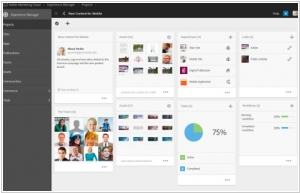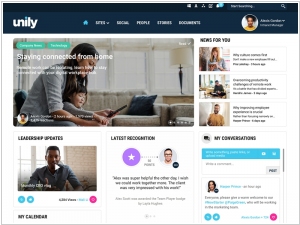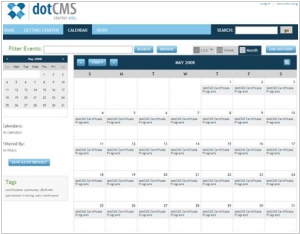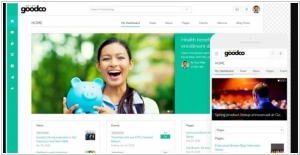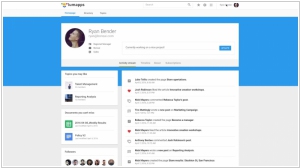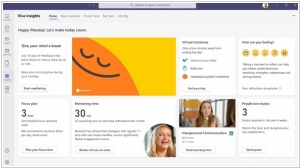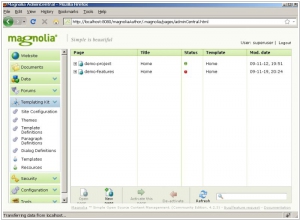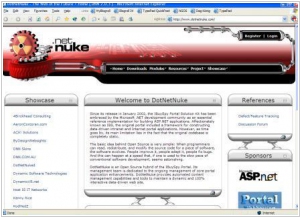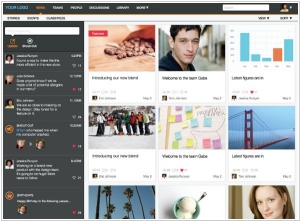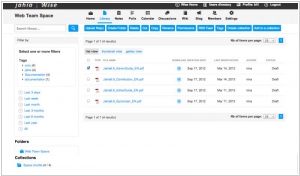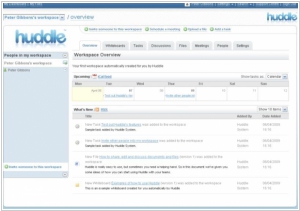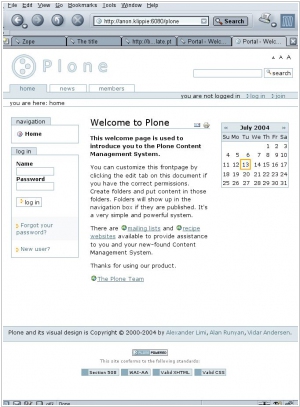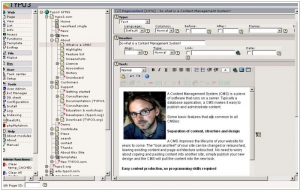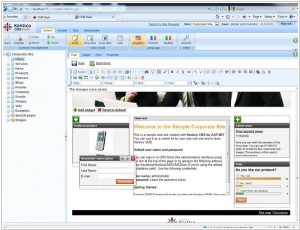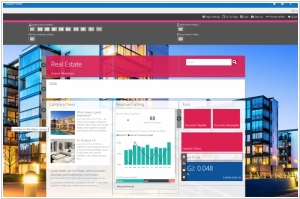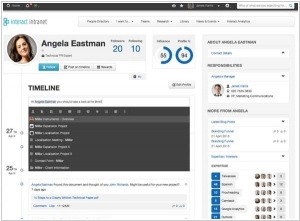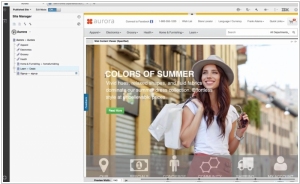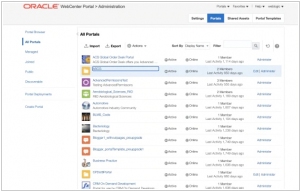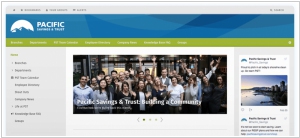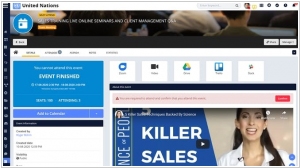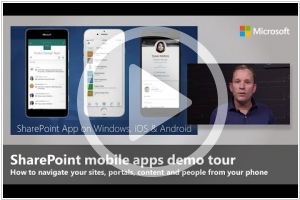Top 10 Enterprise Portals
April 01, 2024 | Editor: Michael Stromann
25
Enterprise Portals provide web access to enterprise content and resources to employees, customers and partners.
1
SharePoint's multi-purpose platform allows for managing and provisioning of intranet portals, extranets and websites, document management and file management, collaboration spaces, social networking tools, enterprise search, business intelligence tooling, process/information integration, and third-party developed solutions. SharePoint can also be used as a web application development platform.
2
Sitecore Experience Platform is a powerful content management system (CMS) that combines customer data, analytics, AI, and marketing automation capabilities to nurture customers throughout their journey with personalized content in real-time, across any channel.
3
A powerhouse combo for your content and digital asset management needs. Get personalized, content-led experiences into market faster with Adobe Experience Manager, which combines digital asset management with the power of a content management system.
4
Unily is the employee experience platform that connects, informs, and engages your enterprise.
5
Dotcms is an Open Source Content Management System (CMS), built on leading Java technology and open standards. Take the worry out of hosting your own Content Management System (CMS). DotCMS Cloud allows you to get started quickly and scale rapidly to meet your sites' growth. Allowing you to focus on what matters most, your business.
6
Simpplr combines the leading Modern Intranet, Internal Communications, and Employee Experience technology to help organizations create a culture of trust, connection, and execution excellence.
7
Liferay Digital Experience Platform is designed to work within your existing business processes and technologies to build a custom solution that uniquely meets your needs.
8
LumApps is a single platform to manage both internal communications and external social communications. A social collaborative intranet and employee social advocacy
9
Microsoft Viva is an employee experience platform that brings together communications, knowledge, learning, resources, and insights in the flow of work. Powered by Microsoft 365 and experienced through Microsoft Teams, Viva fosters a culture that empowers employees and teams to be their best from anywhere.
10
A Unified Platform for Content, Community and Commerce. Acquia's open cloud platform delivers scalability, security, and high performance for your Drupal sites. Acquia Cloud is the only solution that helps everyone from professional developers to large enterprises achieve success in Drupal application lifecycle management.
11
Magnolia CMS is an Open Source Enterprise Content Management System, Based on Best-of-Breed Java Technology And Open Standards. The Open Java CMS that runs the digital presence of your organization. Manage marketing, sales and services content for a multi-channel world. Maximize the impact of every touchpoint with Magnolia CMS.
12
DotNetNuke is a Web Content Management Platform (or CMS) for Microsoft ASP.NET, powering over 700,000 production web sites worldwide. The flexible DotNetNuke open source CMS platform also functions as a web application development framework. Depending on your role within your organization, DotNetNuke provides powerful benefits to support your Web initiatives.
13
Jostle’s cloud-based intranet helps leaders align their organization and enable employees. Clarify your teams, initiatives and values. Share your news. Recognize your successes. Make sure each employee has the help and information they need to get work done. Easy to implement with a proven engagement plan. Deploy in a week without consuming IT resources.
14
Open and extendable, Jahia provides a customer data driven content platform to grow your digital business through engaging customer experiences across your entire application ecosystem.
15
The Leading Client Portal Solution for Professional Services Firms. The most effective way to collaboratively work across teams, and with your clients and partners.
16
Plone is a free and open source content management system built on top of the Zope application server. In principle, Plone can be used for any kind of website, including blogs, internet sites, webshops and internal websites. It is also well positioned to be used as a document publishing system and groupware collaboration tool. The strengths of Plone are its flexible and adaptable workflow, very good security, extensibility, high usability and flexibility.
17
TYPO3 is a free Open Source content management system for enterprise purposes on the web and in intranets. It offers full flexibility and extendability while featuring an accomplished set of ready-made interfaces, functions and modules.
18
Kentico is the only fully integrated ASP.NET CMS, E-commerce, and Online Marketing platform that allows you to create cutting-edge websites, and fully optimize your digital customers’ experiences across multiple channels. Kentico saves you time and resources so you can accomplish more.
19
A fully customizable Employee Experience (EX) Platform with extended features to elevate your intranet employee communications. With LiveTiles Portal, you can easily integrate all your digital workplace services, news, contents, and tools from across your entire digital workplace – no matter if they come from your frontline staff, partners, or third-party platforms.
20
Intranet software built for communicators. Inform and connect your greatest asset. Employee experience software that brings your people together.
21
Create an intranet with authenticated access to core applications to improve employee productivity and training and help them get their work done. Help customers get secure, personalized access to their accounts and self-service options, and reduce service costs. Improve the secure exchange of information and applications with suppliers and partners.
22
Quickly and easily create intranets, extranets, composite applications, and self-service portals. Oracle WebCenter Portal provides users with a secure and efficient way to consume information and interact with applications, processes, and people.
23
ThoughtFarmer is intranet software that improves employee engagement, boosts productivity, and enhances knowledge management.
24
AgilityPortal is the Best Intranet Software For Small Businesses The one modern intranet software you need to boost your employee’s overall experience. Tap into the interactive, intuitive, and secure features of AgilityPortal’s intranet platform to dramatically improve your employee’s engagement, validation, communication, and productivity. Tools like Digital workplace which includes, projects, ideation, goals, crm, events meetings and so much more.
Latest news about Enterprise Portals
2023. Box announces Hubs, a custom portal to share specialized content
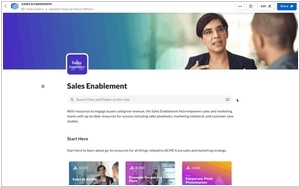
Box has introduced Hubs, a novel tool tailored for crafting centralized microsites to share specific types of content. Essentially, Box Hubs enables users to curate content from their Box account and disseminate it to their chosen audience in a customized and curated manner within their business. The potential applications for this tool are virtually limitless. It manifests as a specialized portal intended to house items such as HR policies, brand assets, or the most recent pricing details for a sales team. In conventional files and folders, these scenarios might lose their clarity, but within a portal, their purpose remains evident. The hub format offers a meticulously curated set of information for easy searchability—a concept that Box co-founder Levie acknowledges was not fully explored until the emergence of ChatGPT last year.
2023. Cleary raises $4.5M to reinvent the intranet
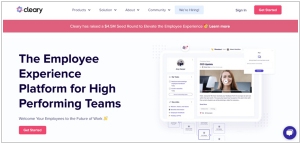
Cleary, one of the startups dedicated to rejuvenating the intranet, has recently secured $4.5 million in seed funding. Cleary's vision revolves around providing a comprehensive employee experience platform, covering various aspects. In an effort to help businesses manage their SaaS expenditures effectively, Cleary's approach proves to be strategic. The platform offered by Cleary encompasses a communication system, wikis, tools for virtual employee recognition, an employee directory with organizational charts, a search tool that consolidates a company's knowledge base from multiple third-party sources, and a Q&A service for live events. Cleary seamlessly integrates with popular HR tools like Workday and ADP, communication services such as Gmail, Google Calendar, and Slack, as well as authentication services provided by Okta, Microsoft, and Google.
2022. Microsoft wants to add Stories to corporate portals
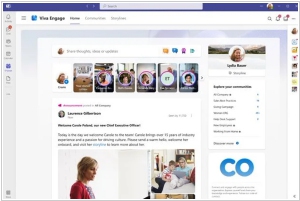
Microsoft is venturing into the enterprise realm by introducing Stories, a forthcoming feature within its Viva "employee experience" platform, aimed at bringing the popular snackable content format to the corporate world. While the Stories format, known for its ability to captivate audiences, may seem contradictory to the productivity-focused mindset of corporate customers subscribing to Viva, Microsoft claims otherwise. The company argues that there is a genuine interest in ephemeral photo and video slideshows within the workplace. According to Microsoft, these Stories provide a "fun, familiar way" for employees to maintain connections with their colleagues.
2022. Microsoft is elevating Viva from pure employee portal to job support platform starting with sales
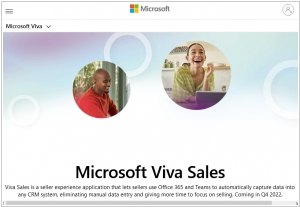
When Microsoft introduced Viva last year, it positioned the platform as an employee portal where individuals could access information such as parental leave policies and other internal communications related to company culture and policies. However, it appears that Microsoft has grander aspirations for Viva beyond being a typical employee intranet that provides essential employee information. Today, Microsoft announced the introduction of the first of potentially multiple job-specific features within Viva, beginning with sales. This tool is built on Office 365 and optimized for Microsoft Dynamics 365 CRM. By associating a customer's name or contact, Viva Sales can automatically retrieve documents, spreadsheets, presentations, emails, and other relevant materials into the CRM tool. It allows sales professionals to utilize the tools they already utilize and cherish on a daily basis, including email systems like Outlook, Word documents, PowerPoint presentations, and Teams. Microsoft will offer Viva Sales at no cost to its Microsoft Dynamic 365 customers.
2022. Joomla recommends to upgared to 4 version
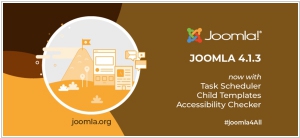
Joomla, the free and open-source CMS designed for publishing web content, has recently launched two new versions: Joomla 4.1.3 and 3.10.9. These updates include bug fixes and various enhancements, such as the addition of a task scheduler, child templates, and an accessibility checker. Built on the model-view-controller architecture, Joomla allows users to develop powerful online applications independently of the CMS, providing the flexibility to create dynamic websites. The latest CMS version, Joomla 4.1.3, empowers users to build websites that can scale and adapt to their evolving needs. While Joomla 3.10 can still be used for new projects, the Joomla team strongly recommends utilizing Joomla 4 for its improved features and capabilities. As Joomla 3.10 is approaching its End of Support (EOS), with less than six months remaining for bug fixes and one year for security fixes until August 17, 2023, users are encouraged to transition to the newer 4.x version. Joomla 4.x, available for nearly a year now, offers numerous enhancements and leverages the latest production versions of PHP, enhancing both the security and performance of websites.
2021. Optimizely to acquire Welcome to help marketers drive Customer Experience outcomes

Optimizely, a leading digital experience platform (DXP) provider, has announced a definitive agreement to acquire Welcome, a four-time Gartner Leader. Welcome combines the top capabilities of content marketing platforms (CMP), marketing resource management (MRM), and digital asset management (DAM) into a unified solution. This acquisition will enable the combined company to empower marketing teams worldwide to generate tangible business value by delivering improved customer experiences. In today's digital-first landscape, the internal marketer experience plays a pivotal role in shaping the external customer experience. Marketers, operating in an increasingly hybrid work environment, bear the responsibility of driving business growth and promptly adapting to the ever-evolving needs of the digital consumer. However, the complexity and fragmentation of the marketing stack hinder their ability to provide personalized and contextual experiences, as well as create relevant content at scale.
2021. Simpplr raises $32M for its intranet platform
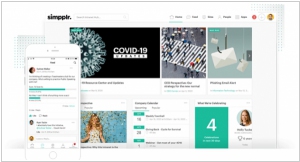
Simpplr, an innovative platform referred to as an "employee communications and enablement platform," has successfully raised $32 million in a Series C funding round. While Simpplr is not the sole intranet solution available, it has garnered recognition from industry analysts such as Gartner and Forrester, and has received high praise from its customers, primarily due to its unwavering focus on delivering an exceptional user experience. User experience is the platform's primary strength and key differentiating factor. Another notable feature is Simpplr's auto-governance engine, which sets it apart from competitors. The company is also dedicated to providing advanced analytics capabilities as a means of distinguishing itself. Simpplr aims to empower organizations in creating a more efficient workplace, understanding that simply being a tool without offering insights for improvement would limit its value.
2021. Carlyle acquires 1E.com, an endpoint and hybrid working specialist
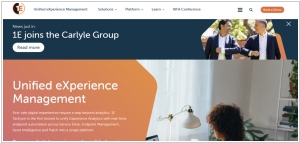
1E, a company specializing in developing solutions for organizations to facilitate hybrid working and manage endpoint management, has been acquired by the private equity firm Carlyle for $270 million. Initially focused on Microsoft technologies, 1E created endpoint technology management solutions and tools to enhance computer terminal and network management for businesses. As time progressed, even before the COVID-19 pandemic, 1E recognized the emergence of hybrid working environments and the challenges they posed to both companies and users. Consequently, the company expanded its offerings to include software specifically designed to enable efficient hybrid workspaces.
2021. Intranet startup Staffbase raises $145M
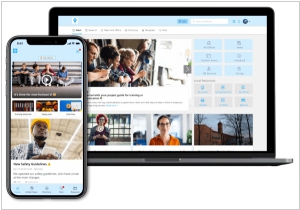
Staffbase, a provider of an internal communications platform resembling an intranet, has secured a substantial funding round of $145 million. The company boasts an impressive client base with over 1,000 onboarded clients, including prominent names like Adidas, Audi, BHP, and Deutsche Post DHL. In the realm of internal communications, Staffbase faces competition from companies like Dynamic Signal and Social Chorus. Additionally, in the intranet category, competitors include Simpplr and Unily. Staffbase differentiates itself by offering a unified platform that combines mobile employee apps and intranets. Furthermore, it provides seamless integration with the Microsoft 365 ecosystem and popular messaging platform Slack. These factors contribute to Staffbase's competitive edge in the market.
2021. Google and HCL team up for Digital Experience platform
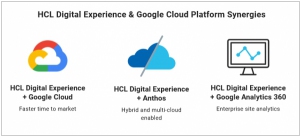
The HCL Digital Experience (DX) platform is now available on Google Cloud, offering clients access to the comprehensive solutions provided by Google Cloud, whether they choose to run their applications on-premises or on other cloud platforms. With this integration, HCL Digital Experience customers can continue leveraging the trusted and reliable features of HCL's Digital Experience platform, while also harnessing the global scalability, security, and flexibility offered by Google Cloud. Furthermore, HCL DX customers will have valuable insights into their customers' interactions with their website, thanks to seamless integration with Google Analytics 360 and HCL Unica Discover. This integration empowers businesses to optimize their customer journeys and enhance overall digital experiences.
2020. Acquia launches Digital Experience Platform
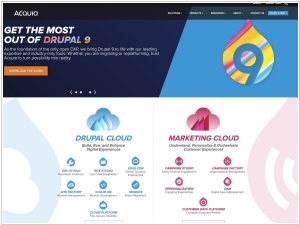
Digital experience company Acquia has announced the launch of its new Acquia Open Digital Experience Platform (DXP). This powerful platform combines Acquia Marketing Cloud and Acquia Drupal Cloud, providing organizations with a unified solution to leverage data and content effectively, enabling the rapid creation of innovative digital experiences. With the Acquia Open DXP, marketers and developers now have access to a single, user-friendly platform for building, personalizing, and orchestrating multi-experience customer journeys across various customer touchpoints, including touchscreens, chat, voice, and more. The platform also offers valuable tools such as Developer Studio, an integrated development environment (IDE), and Site Factory, a robust solution for managing and scaling Drupal 9 sites and applications, making it easier for developers to build Drupal sites. Additionally, the inclusion of CMS Migrate simplifies the transition from older versions of Drupal and legacy CMS to the latest Drupal 9 release.
2020. Episerver to acquire Optimizely, the world’s leading Experience Optimization platform
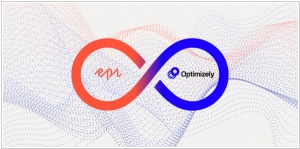
Episerver, recognized as a leader in the Gartner Magic Quadrant for Digital Experience Platforms, has made an official announcement regarding its agreement to acquire Optimizely, the leading provider in experimentation and optimization solutions. This strategic union results in the formation of the most advanced digital experience platform, enabling the optimization of every customer interaction throughout the entire user journey. By combining Episerver's expertise in creating digital experiences through content and commerce with Optimizely's capabilities in experimentation and optimization across touchpoints, marketers gain the power to develop experiences that continually improve and evolve over time.
2020. Adobe Experience Manager now offered as cloud-native SaaS application
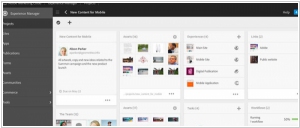
Adobe Experience Manager has introduced a cloud-native Software as a Service (SaaS) application. Previously, it was available as an on-premises solution or a managed service, but it lacked the pure cloud-native architecture. The availability of AEM as a cloud service brings significant benefits to customers, providing the same value as any other cloud service. With this new offering, customers can now utilize all the features and tools of AEM without the burden of maintenance, management, or updates. This enhances flexibility, agility, and continuous access to the latest updates for the marketing team. AEM offers a range of capabilities, including real-time customer experience management. Real-time access to data enables the delivery of products, services, and experiences tailored to the specific needs of each customer at any given moment.
2018. SharePoint gets organization-wide news and content targeting
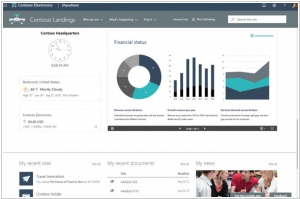
Microsoft has recently announced several enhancements for SharePoint and Office 365 sites, bringing new capabilities and functionalities. Among the notable updates is the introduction of a designated communication site that serves as the official news portal for the organization. This allows news posted on the portal to be easily identified with a special indicator, ensuring clear visibility on both mobile devices and the SharePoint home page. Additionally, a new feature enables the targeting of content to specific audiences based on their Active Directory (AD) Group membership, including dynamic groups. Moreover, SharePoint sites now have the ability to create mega-menus for navigation, facilitating improved user experiences and seamless site exploration. These advancements aim to enhance communication, personalization, and navigation within SharePoint and Office 365 sites.
2017. SharePoint 2016 finally added SharePoint Framework Support
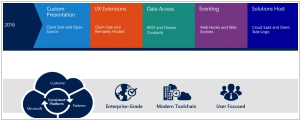
Microsoft's objective in launching SharePoint Framework into general availability in February was to attract a wider pool of developers to the SharePoint ecosystem. Now, with the introduction of SharePoint Feature Pack 2 (FP2), the company extends Framework support to users of SharePoint 2016. Framework serves as a page and web part model, offering comprehensive assistance for client-side SharePoint development, seamless integration with SharePoint data, and compatibility with open source tools. This release simplifies the process for SharePoint 2016 users and third-party developers to construct solutions centered around SharePoint.
2017. SharePoint Framework is generally available

Microsoft has introduced the SharePoint Framework, empowering developers and administrators to construct and deploy components that are utilized by Office 365 users within their production environments. This advancement entails leveraging web technologies to create agile, responsive, and notably mobile-friendly applications on SharePoint. While SharePoint has served as an application and development platform for a considerable duration, the release of the Framework marks a significant stride in enhancing the developer experience. Historically described as unwieldy and challenging, the SharePoint Framework introduces improvements that address these concerns.
2016. Microsoft connects SharePoint Team Sites to Office 365 Groups
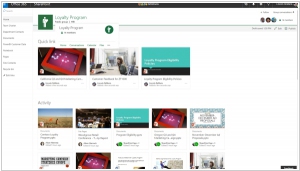
Microsoft is rolling out the integration of SharePoint and Office 365 team sites, introducing a new feature that enables the creation of interconnected SharePoint Online team sites within seconds. This integration simplifies the process as follows: Whenever an Office 365 Group is created, the service automatically generates a SharePoint team site. The appearance of the site can be customized by the team site administrator and includes various elements such as pages, lists, libraries, and team news. SharePoint team sites serve as collaborative spaces where teams can effectively communicate, share documents, and collaborate on projects. They are user-friendly and facilitate the creation of dedicated sites for each project undertaken by the team. Moreover, team sites are easily accessible across multiple devices, making them suitable for mobile workers as well.
2016. Microsoft released SharePoint for Android
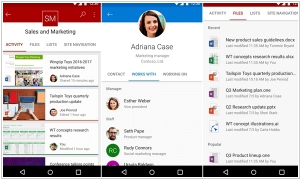
Despite Microsoft's withdrawal from actively competing in the mobile OS market for the past two years, the company has been notably sluggish in releasing Android apps. However, Microsoft has finally unveiled its SharePoint mobile client specifically designed for Android smartphones and tablets. This application offers users the ability to collaborate within team sites and access documents stored in SharePoint across various categories, including Sites, Links, and People. To utilize the SharePoint app, organizations must have an Office 365 subscription that includes SharePoint Online. Support for SharePoint Server 2013 and SharePoint 2016 will be incorporated at a later stage. Earlier this year, Microsoft released SharePoint mobile apps for iOS and Windows Phone, with the latter app still being in the preview stage.
2016. Microsoft brings SharePoint to iOS
Microsoft has introduced a new mobile application for SharePoint users, designed to provide access to a company's SharePoint-powered intranet portal and its content on smartphones and tablets. Initially available on iOS devices such as iPhones and iPads, the app will be extended to Android and Windows platforms by the end of the year, according to Microsoft. The app is compatible with both SharePoint Online in Office 365 and SharePoint Server 2013 or 2016 in on-premises or hybrid environments. It includes a Sites tab that enables users to visit their frequently accessed SharePoint sites, view recent activity, access files, lists, pages, and other content on those sites. Additionally, the app integrates with other Microsoft mobile applications, allowing seamless transitions between apps. For instance, clicking on an Office document in the SharePoint app will open the corresponding Office mobile app, while viewing a document library on a team site will redirect users to the OneDrive mobile app for iOS.
2016. SharePoint adds new document libraries
Now that SharePoint 2016 has arrived, Microsoft is gradually introducing SharePoint Document Libraries to its commercial Office 365 subscribers through SharePoint Online. These new document libraries represent a more user-friendly approach to SharePoint, allowing users to conveniently access documents, modify document metadata, and prioritize content within the document library. This development is significant as it addresses longstanding criticisms of earlier versions of SharePoint regarding usability challenges. Throughout the extensive lead-up to the release of SharePoint 2016, Microsoft pledged its commitment to enhancing the user experience.
2016. Liferay launched Digital Experience Platform
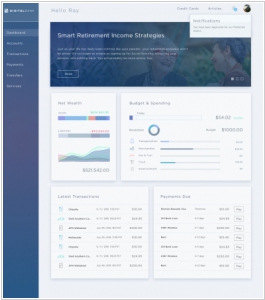
The Open source enterprise CMS provider, Liferay, has introduced its Digital Experience Platform (DXP). This platform is specifically designed to assist companies in creating and managing experiences that facilitate the entire customer relationship. It offers a comprehensive customer view that goes beyond marketing by integrating sales, marketing, support, and service teams. With DXP, companies can develop highly personalized experiences by targeting valuable information, offers, and resources to specific user segments and individuals. It also enables the creation of a unified customer profile that consolidates all interactions and significant data points. Furthermore, DXP provides access to engagement data such as views on video content, click-through rates on targeted materials, community participation, and social metadata.
2016. Liferay launches Digital Experience platform
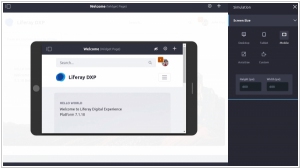
Historically recognized as portal software, Liferay has now ventured into the digital experience market with its latest offering, the DXP (Digital Experience Platform). This strategic shift represents a natural evolution for Liferay rather than a complete departure from its previous trajectory. As stated by Bryan Cheung, the CEO of Liferay, their customers consistently expressed a need for functionalities that went beyond the scope of traditional portal implementations. In response, Liferay would develop or integrate those features, prompting a reevaluation of their position in the market. The Liferay DXP consists of various components, with the portal platform serving as its foundation. The platform includes seamless integrations with numerous backend systems, including CRM, ERP, support, and others. This infrastructure empowers customers to create a wide range of customer experience solutions spanning web experiences, mobile experiences, and even hybrid online/offline experiences throughout the entire customer lifecycle. Please note that while the HTML tags and links were retained, they may not be properly rendered in this plain text format.
2015. Liferay partners with Red Hat to provide an open source portal solution
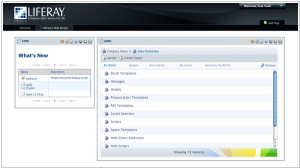
Liferay and Red Hat have joined forces to collaborate on an open-source portal that combines the capabilities of Liferay Portal and Red Hat JBoss Enterprise Application Platform (JBoss EAP). This product specifically targets companies seeking open-source options with enterprise-grade portal solutions. The collaboration also hints at the possibility of integrating with other Red Hat JBoss Middleware products in the future. From a business standpoint, this partnership is intriguing as Red Hat ceased offering new subscriptions to JBoss Portal in February 2015. However, Red Hat will continue to provide support for JBoss Portal until the scheduled end of the current release stream in March 2018. This new venture exemplifies Red Hat's ongoing commitment to the portal market, showcasing their dedication to serving customers in this domain.
2014. Enterprise cloud collaboration provider Huddle raises $51M
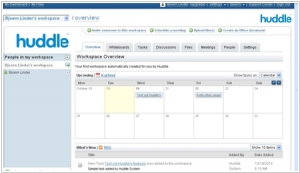
Huddle, a major player in enterprise cloud collaboration, has announced securing an additional $51 million in funding, valuing the company between $250 million and $300 million. Huddle's success can be attributed to two key factors: its robust platform and expansive customer base. The platform provided by Huddle allows companies not only to share and exchange files but also to collaborate on them collectively, offering features like versioning control and change tracking. The platform offers a range of secure services such as team collaboration, file sharing, task management, social collaboration, and mobile collaboration. Huddle seamlessly integrates with various third-party applications and supports multiple platforms, including Office, SharePoint, and Salesforce.
2014. Intranet platform Jostle raises $2M
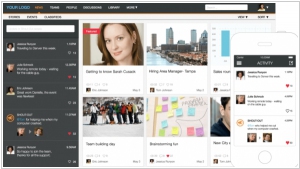
Jostle, an intranet platform developer, secured $2 million in funding to expedite customer acquisition and further enhance product development. Jostle aims to revitalize intranet portal software by providing a fresh and intuitive user interface. The platform facilitates seamless publication of news stories, announcements, online discussions, and other pertinent information such as team directories. Offering a visually appealing experience, Jostle also incorporates a chat tool reminiscent of Yammer. Streamlining the onboarding process, Jostle integrates with Active Directory and other directory services. It supports popular single sign-on solutions and offers integration with Google Apps, including Google Docs, Gmail, Google Contacts, and Drive. Jostle offers flexible pricing options, starting at $6 per employee per month for small companies with up to 100 employees, and provides discounted rates for larger enterprises.
2014. Huddle launches secure document publishing patform
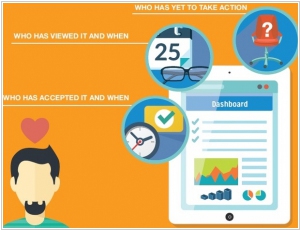
Huddle, a cloud collaboration and content management tool, has introduced a new secure document publishing platform accompanied by a comprehensive analytics dashboard. This platform empowers enterprises to measure, track, and engage with the files they share and publish. These functionalities enhance Huddle's existing intelligent recommendation engine. With this platform, enterprises can securely publish final versions of documents as read-only to a specific audience, while simultaneously monitoring all activities related to these files. When a document has completed the team collaboration stages and is ready to be shared organization-wide, Huddle's secure publishing platform becomes invaluable.
2013. What is Google Cloud Print and why do you need it for your business?
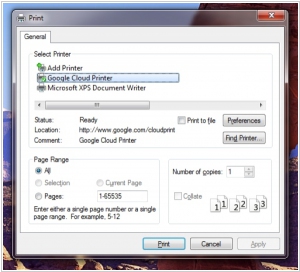
How printer works in your office now? It's connected to some computer, and users from other computers can send documents to it via LAN network. However, it turns out, that such scheme is already obsolete. First, because your employees are already using mobile devices (smartphones, tablets). And if they need to print something from smartphone, they have to send needed file to computer and print it from there. Second, SaaS apps that you use have to convert documents to PDF or other format, so that you could download and print them. Third, if you want to print something from your home computer on the office printer (and them come to office and have the printed docs ready) - you can't do it. To fix these issues Google invented the Google Cloud Print. ***
2013. Microsoft social networks: Yammer vs SharePoint Newsfeed
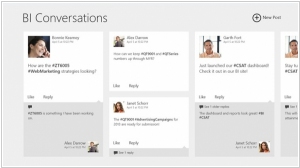
Last year, when Microsoft acquired Yammer (the service for building enterprise social networks), it already had own the own social network based on SharePoint (now it's called SharePoint Newsfeed). And that's OK, because Microsoft bought Yammer not for the engine, but for the customer base and the image of social vendor. But now, it seems, Microsoft doesn't know what to do with two almost identical solutions. In June, Office 365 users got the opportunity to replace SharePoint Newsfeed to Yammer, and Microsoft continues to insist that Yammer - is its future and that soon Yammer will become the platform for all its business apps. But on the other hand SharePoint Newsfeed also continues to evolve. For example, today SharePoint Newsfeed app for Windows 8 has been launched. And it's very similar to Yammer app for Windows (guess where is what on the screenshots). ***
2013. Building a company website: Microsoft Office 365 vs SharePoint
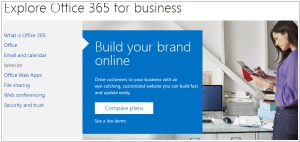
Perhaps it may come as a surprise to many, but Microsoft Office 365 offers the ability to create a public website for your company using SharePoint Online. Building websites on SharePoint has been a long-standing practice. However, it used to be quite expensive due to the cost of SharePoint licenses and Windows hosting. Additionally, SharePoint was originally designed for intranet portals and was not ideally suited for public sites. As a result, only large companies would use SharePoint as their website engine for various reasons. Fortunately, with the introduction of Office 365, things have changed for the better. Small business owners with an Office 365 subscription can now create a company website for free. The only technical skill required is Word editing.
2012. SharePoint 2013 will integrate Yammer, provide platform around the online version
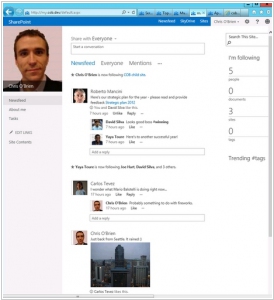
At the SharePoint Conference 2012 Microsoft revealed some new facts about the upcoming SharePoint 2013. But nothing specific has been announced - just few promises. The exact release date is also still unknown. Microsoft's corporate vice president of the Office Division Kris Koenigsbauer promises a launch during the first fiscal quarter of 2013, which falls between October 1, 2012 and December 31, 2012. Now about the Yammer. As expected, Microsoft will integrate this social intranet service (acquired in June) into SharePoint. The integration will be done via Yammer Web Parts and Yammer Open Graph. Got it? And soon (Microsoft says) SharePoint will become a system "powered by Yammer". Ok, let's look what is the real sense of integration between SharePoint and Yammer. ***



